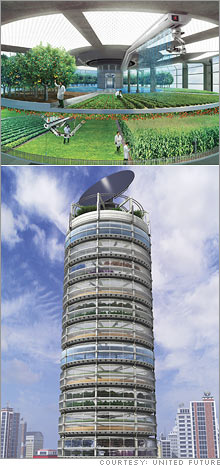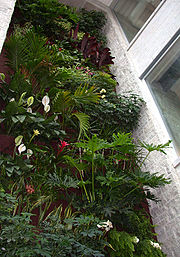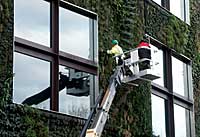
A nearly space age concept; skyscrapers dedicated to farming in city environments. These colossal structures would be the ultimate merger between farming and the physical fabric of the city. If the monumental costs of it's construction are overcome these structures could bring in a profit of 18 million dollars per year, using the structure to the right as an example. This investment would have huge payoffs: abundance and ease of access to food, environmentally sound use of space and become a rather fascinating addition to the urban skyline.
Development of these structures would not be the perfect option the trade of would be the challenge of creating an infrastructure to support the fertilization of these vertical farms. With the unsustainable nature of oil based fertilizers in the future maintaining them may be more difficult then anticipated. For now though the hopeful words of Dickson Despommier, an environmental science professor and supporter of the concept, has a pleasing ring "It will free the world from having to worry where our next meal will come from."
Please see the CNN article on vertical farming

http://money.cnn.com/2007/09/10/technology/farming_vertical.biz2/index.htm?postversion=2007091105





